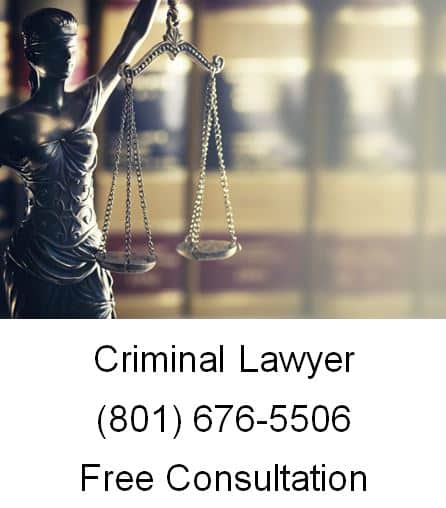
If you have been charged with a drug offense, contact an experienced Utah drug attorney immediately. Time is of the essence. Do not attempt to convince the arresting officer. Anything and everything that you say can and will be used against you in the court when your case comes up for trial. It’s best to remain silent and ask that you be allowed to speak to your attorney.
Which drugs are illegal?
At last count, dozens. The laws of Utah list the drugs that are always illegal within its borders, regardless of whether the drug is possessed, purchased, or sold. Each state also lists the drugs that are illegal unless prescribed by a physician. In addition, federal law prohibits the possession, purchase, and sale of many types of drugs. State and federal laws usually refer to illegal drugs as “controlled substances”; the older term is “contraband.” If someone you know has been arrested by the police for possession or trafficking of drugs, contact an experienced Utah attorney immediately.
Drug crimes are a serious offense.
Strictly speaking, “drugs” are substances used for the diagnosis, cure, treatment, and prevention of a disease or physical or mental condition. “Narcotics” are substances that dull the senses and become addictive after steady use. “Inhalants” are narcotics, and their use as narcotics is illegal. When inhaled, they rob the body of oxygen and can cause brain damage. Spray paint, hair spray, paint thinner, and bug killers are the commonest types.
Most states including Utah group drugs and narcotics into categories established under the federal Uniform Controlled Substances Act. They are categorized according to their potential for harm in contrast to their possible medical benefits. For example, “Schedule I” drugs have no beneficial medical use; they are always harmful. Heroin and LSD are Schedule I drugs. Schedule II drugs include cocaine, opium, and amphetamines. Because Schedule I drugs have no beneficial use, the penalty for possessing and selling any of them is the severest.
There are three types of crime: infractions, misdemeanors, and felonies. Felonies are the most serious type of crime. Felony crimes include rape, assault, and burglary. Though drug possession can be classed as a felony, this is usually only in cases where an individual is found to have a large quantity of illegal drugs in their possession or depending on the nature of drugs involved. A drug conviction will remain on your record and will adversely affect your life. You will find it difficult to get a job or rent an apartment. If you have been arrested for a drug crime, your first course of action should be to speak to an experienced Utah drug attorney.
Under Utah law, drugs are grouped into Schedule I, II, III, IV & V. Possession of Schedule I and II drugs are a third degree felony. Possession of Schedule III, IV and V drugs are a class B misdemeanor. If you are convicted of a third degree felony, you could face up to 5 years in prison and a fine up to $5000. A class B misdemeanor conviction can result in a jail term up to 6 months and a fine up to $1000.
A third degree felony can result in up to 5 years in prison and a fine up to ,000 whereas a class B misdemeanor conviction can result in up to 0-6 months’ jail time and up a $1,000 fine. Repeat offenses can have serious consequences. For example, a class B misdemeanor rises to a third degree felony upon repeated charges.
Possession of a controlled substance
Possessing a controlled substance isn’t always a crime. Utah and federal laws only prohibit persons from “knowingly or intentionally” possessing illegal drugs. Being innocently in possession of a controlled substance usually isn’t sufficient to support a criminal conviction. For example, if a person receives a package in the mail that contains drugs, the person can only be convicted of illegal possession if it is shown that he or she knew the drugs would be delivered and intended to take possession of them. Of course, it isn’t illegal for a person to possess certain drugs if they have been prescribed by a doctor for that same person’s illness or injury.
Purchasing a controlled substance is a different offense from possessing a controlled substance. A suspect can be charged with both acts in connection with a single incident. Selling controlled substances and manufacturing them are also criminal acts. An adult who is convicted of either offense can receive a prison sentence of up to 5 years and be fined as much as $5,000 for the first offense in Utah.
Giving drugs to another person is a criminal act. Under Utah law, the “sale” of a controlled substance includes giving a drug to someone. It’s not necessary to receive something in exchange. This means that cash doesn’t have to change hands for a drug sale to occur.
Quantity Of Drugs
The seriousness of a drug offense depends on the quantity of drugs the suspect possesses or sells. Possessing a small quantity of marijuana is usually a misdemeanor, but possessing large amounts of any illegal drug is a felony. When someone is caught with a cache of controlled substances, most criminal courts presume that the individual intended to sell them. To beat a “trafficking” charge, you must present strong evidence to overcome or “rebut” the court’s presumption. But even if the trafficking charge is successfully rebutted, you might still face a charge of illegal possession.
Obviously, trafficking in large quantities of drugs or narcotics is a serious offense, particularly if the substances cross state lines.
The police can personally search a minor for drugs. The police can search anyone who is under arrest. Furthermore, they can stop and frisk anyone for drugs and narcotics, and also weapons.
Most drug statutes make it a crime to knowingly manufacture or deliver or possess with intent to manufacture or deliver controlled or counterfeit controlled substances. Controlled substances include, among other things, heroin, cocaine, morphine, methamphetamine, LSD and marijuana. Possession of controlled or counterfeit controlled substances may be actual physical possession or “constructive” possession. Constructive possession means that possession will be implied if the defendant has the intent to possess the illicit substance and maintains control and dominion over the premises where the controlled substances are located. The mere presence of controlled substances on defendants’ premises is not enough, however, particularly if it is a location that is well traveled or occupied by others. There must be sufficient proof that the defendants had knowledge of the presence of the controlled substances and intended to possess the substances even though they may not have been in their physical possession. Thus, if the controlled substances are located in an area of the defendants’ home or car, where they have exclusive dominion or control, this may constitute possession by the defendants, by virtue of the location of the drugs on the defendants’ private property.
In drug-dealing cases, if defendants are apprehended before the actual delivery of the controlled substance, proof of intent to deliver controlled substances is generally demonstrated by circumstantial evidence. The most compelling circumstantial evidence on this issue is the amount of controlled substance defendants have in their possession at the time of arrest. The larger the amount, the more likely it is that the defendants intended to deliver some portion of it to others, rather than keeping it for personal use. Even if the defendants possess a small amount of the controlled substance, they can still be convicted of possession with intent to deliver, but much more circumstantial evidence will be necessary. Thus, in addition to possession, the government might be required to produce evidence of contacts or appointments made for purposes of delivering the controlled substances. Other circumstantial evidence of possession with intent to deliver might include the type of packaging used for the controlled substance, large sums of money or weapons in the defendants’ possession or the presence of other drugs or drug paraphernalia in the area.
If there is insufficient evidence of intent to deliver, then defendants can still be charged with the lesser offense of possession of a controlled substance. Simply proving that the defendants had knowledge of the controlled substance and that it was in their immediate and exclusive control is sufficient for a charge of drug possession. Note here again that knowledge of the controlled substance alone is not enough. The defendants must also have immediate and exclusive control over the controlled substance. Just as in the case of possession with intent to deliver, simple possession of a controlled substance may either be actual or “constructive.”
Interestingly, most drug offense statutes also make it crime to possess with intent to deliver or merely possess counterfeit controlled substances. At first glance, this seems an unusual criminal offense because counterfeit substances don’t cause any real social harm. Nonetheless, one rationale for these provisions is that they allow the government to bring cases against defendants in instances when undercover officers pose as drug purchasers and buy counterfeit controlled substances instead of the “real thing.” Without statutes outlawing delivery or possession of counterfeit controlled substances, the drug seller could not be prosecuted because what he sells the undercover officer is not actually a controlled substance as defined by the statute. A similar result would occur if the officer arrests an individual for simple possession of drugs only to later discover after testing that the drugs are in fact counterfeit.
One of the major difficulties associated with prosecuting defendants for delivery or possession of counterfeit controlled substances involves distinguishing between possession of innocent substances and possession of counterfeit controlled substances. In other words, how can the police tell whether the defendant intended to possess counterfeit cocaine or was merely possessing an “innocent” substance such as flour? Generally, the counterfeit substance must be packaged and presented in such a manner that a reasonable person would believe that using the product would produce an effect similar to that of the actual controlled substance. Some factors that will be considered when charging the defendant with delivery or possession of counterfeit controlled substances include the type of storing and packaging used for the counterfeit substance, any representations made by the defendant as to the nature of the substance, and whether the defendant was attempting to exchange the counterfeit substance for something of value. Further, to avoid dismissal of the indictment for failure to charge the appropriate crime, it is no defense to a charge of selling counterfeit controlled substances that the defendant thought they were actual controlled sub stances. This means that a defendant who may have been misled as to the authenticity of the substances will not be able to escape prosecution.
Finally, the penalty provisions for drug offenses typically impose lengthier sentences depending upon the amount of controlled or counterfeit controlled substances manufactured, delivered or possessed by the defendant.
Justice Reinvestment Initiative
The State of Utah has adopted an initiative called the Justice Reinvestment Initiative. Under this initiative, the courts are encouraged to provide opportunities for recovery instead of incarceration. As a result, you may not receive jail term for your drug offense and you may instead be provided with an opportunity for recovery. Speak to an experienced Utah drug attorney to know if you qualify for this initiative.
Utah has something similar to the Three Strikes law although it is not officially called the Three Strikes law. It substantially increases the penalties for a third offense in certain felony and misdemeanor cases. For example, if a newly convicted felon had a criminal record of two prior felony convictions, the judge was obligated to impose the maximum sentence for the third crime. Three strikes laws are intended to remove repeat offenders from society, and prevent them from committing further crimes. Unlike traditional sentencing, where judges can use personal opinion to give harsher or more lenient sentences, mandatory sentencing does not allow personal opinion to affect the punishment that is handed down.
The State of Utah has harsh penalties when it comes to drug crimes. Speak to an experienced Utah drug attorney to know how you can fight the drug charges against you.
Drug Crimes Defense Lawyer Free Consultation
When you need to defend against drug crimes in Utah, please call Ascent Law LLC (801) 676-5506 for your Free Consultation. We want to help you.
8833 S. Redwood Road, Suite C
West Jordan, Utah
84088 United States
Telephone: (801) 676-5506
Recent Posts
Real Estate Lawyer Herriman Utah
Software Development Agreement Law
Source: https://www.ascentlawfirm.com/drug-offenses/
https://upopety1960.wordpress.com




